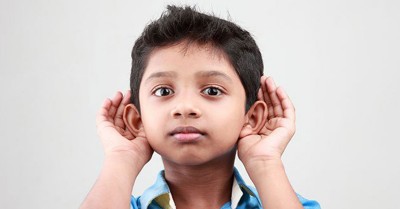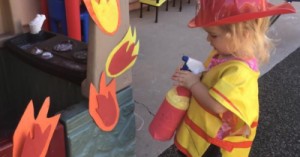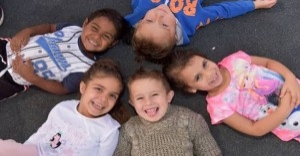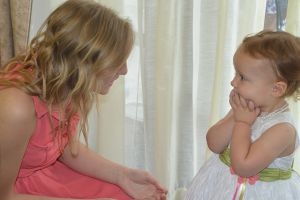Phonemes are the basic units of a spoken language and awareness that language is composed of these small sounds is termed phonemic awareness. The following article provides strategies for building phonemic awareness in young children.
Explore Sounds In Their Environment
Phonemic awareness starts with the ability to observe and differentiate various sounds. So look for ways you can motivate your young learners to identify distinctive sounds. One of the ways to do this is by playing a game in which children close their eyes and listen to a sequence of familiar sounds like sneezing, closing the door or playing a key on the piano. As they listen carefully, they have to identify the sound on their own. In fact, you can even extend the game to make two noises, one after the other and then have children identify them, in the correct order like, "There were two sounds. First, we heard a ____, and then we heard a ____." This will help them to learn to listen carefully to sounds which are after all the building blocks of phonemes.
Use Rhyme and Rhythm
The love for rhyme and rhythm is innate in children which can be used to refine attention to phonemes as well. So have them play games like clapping and counting the syllables in their own names. Practise rhymes or songs to help them note even subtle differences between the sounds of two phonemes like /b/ with /p/ which can lead to completely separate meanings like bat and pat.
Listening Games
Yet another way to improve phonemic awareness in young children is to get them to notice differences tween what they expect to hear and what they actually hear. For this, you can read aloud popular stories or recite your favourite rhymes even as you change a word here or the order there. Examples are “Baa baa blue sheep” and “Little Red Riding Hood went inside and Knocked on the Door.” As your learners pick out the changes, ask them to explain what was substituted in place of what. Such activities will make children aware of how changes even in small units of sounds can change the meanings of sentences.
Initial And Final Phonemes
Over time you can build up to more complex activities that help children to identify phonemes in multiple words. Using picture cards, ask your learners to find those pictures whose names start with the same initial sound. As each picture is found, the child is to say its name and identify the initial phoneme like /s/ in the snail, snake, and seal. Likewise vary the game to identify final phonemes across words or extend it to a combination of phonemes in a larger word list.
Further Reading
Letterland Phonics - The following article provides information on What Is Letterland, How It Works, Examples, Free Resources and more!
Phonics Worksheets - A variety of free printable worksheets are available to download.
Rhymes Posters - Free posters of popular nursery rhymes with rhymes and matching pictures.
Rhymes In Auslan Sign For Children - The following article provides a list of rhymes in Auslan. Each rhyme includes lyrics, a picture song board, key signs and a video of how to use Auslan signs to sing each rhyme.
Reference:
Phonemic Activities For Preschool, Reading Rockets







 Open ended questions cannot be responded to with one word answers such as yes or no. These types of questions enables a child to provide
Open ended questions cannot be responded to with one word answers such as yes or no. These types of questions enables a child to provide During your child’s preschool years, an important milestone begins to emerge. This is the development of pre-writing skills. Pre-writing skills are used to encourage, develop
During your child’s preschool years, an important milestone begins to emerge. This is the development of pre-writing skills. Pre-writing skills are used to encourage, develop Open ended materials enables children to play freely. They are objects that have no rules to follow, use or function. Raw materials that can be
Open ended materials enables children to play freely. They are objects that have no rules to follow, use or function. Raw materials that can be An Acknowledgment of the Country is a way of showing respect for the Traditional Owners and can be given by both non-Indigenous people and Aboriginal
An Acknowledgment of the Country is a way of showing respect for the Traditional Owners and can be given by both non-Indigenous people and Aboriginal Language plays an important role in a child’s development. It enables a child to communicate effectively with their family, learn at school, socialize with friends,
Language plays an important role in a child’s development. It enables a child to communicate effectively with their family, learn at school, socialize with friends, Like adults, children have to deal with their own stress in life. Moving house, starting a new school, preparing for a new sibling - these are
Like adults, children have to deal with their own stress in life. Moving house, starting a new school, preparing for a new sibling - these are Playdough is such a versatile material. It provides numerous benefits to children as they manipulate it, it is safe and soothing and provides children with
Playdough is such a versatile material. It provides numerous benefits to children as they manipulate it, it is safe and soothing and provides children with Teaching children about sustainability enables them to appreciate and respect the natural environment. Early childhood services can provide meaningful hand on learning experiences in order
Teaching children about sustainability enables them to appreciate and respect the natural environment. Early childhood services can provide meaningful hand on learning experiences in order Recycling is an important concept that teaches children to care for the environment. It encourages children to be responsible and show a growing appreciating for
Recycling is an important concept that teaches children to care for the environment. It encourages children to be responsible and show a growing appreciating for When children apply paint to paper, glue things together, or pound a lump of clay, they experiment with colour, shape design and texture.
When children apply paint to paper, glue things together, or pound a lump of clay, they experiment with colour, shape design and texture.



